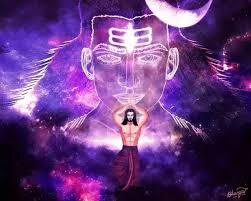Discover the divine essence of the Shiv Mahapuran. Explore its origin, key teachings, stories, structure, and spiritual benefits. Learn how it shapes Shiva worship in Hinduism.
📖 Introduction
The Shiv Mahapuran, also known as the Shiva Purana, is one of the most revered ancient Hindu scriptures dedicated to Lord Shiva, the supreme deity of transformation and destruction in the Hindu Trinity (Trimurti). This sacred text holds immense significance in Shaivism, one of the major traditions within Hinduism, and is a spiritual guide for millions of Shiva devotees across the world.

📚 What is the Shiv Mahapuran?
The Shiv Mahapuran is one of the 18 Mahapuranas, a genre of ancient Indian texts that discuss cosmology, philosophy, rituals, and stories of divine figures. It is believed to be compiled by Ved Vyasa, the sage who also authored the Mahabharata.
Originally, the Shiv Mahapuran was said to comprise 100,000 verses across 12 Samhitas, though in present-day versions, it is often available in 7 Samhitas.
These scriptures convey:
The greatness and supremacy of Lord Shiva
The importance of devotion (bhakti), meditation, and righteousness
Rituals for worship, penance, and the spiritual path toward moksha (liberation)
The origin and powers of divine entities like Parvati, Ganesha, and Kartikeya

spiritual benefits of Shiv Mahapuran
Reading or listening to the Shiv Mahapuran is believed to:
Purify the soul and eliminate negative karma
Strengthen devotion and bring spiritual awakening
Protect the reader from evil influences and fear
Open the path to self-realization and liberation
Bring divine blessings, especially during Shravan month and Maha Shivratri

Shiv Mahapuran Samhitas (Chapters)
Traditionally, the Shiv Mahapuran consists of 12 Samhitas, though many commonly available versions include 7 Samhitas each with unique teachings and divine narratives:
| Samhita | Content Overview |
|---|---|
| Vidyeshwar | Rules of Shiva worship, the creation of the universe, significance of holy places |
| Rudra | Life of Shiva, the story of Mata Sati and Mata Parvati, their marriage, birth of Kartikeya |
| Shatarudra | Stories about different avatars of Shiva, glory of his devotees |
| Kotirudra | Explanation of festivals like Maha Shivratri, and the rituals of Shaiva tradition |
| Uma | Dialogues between Shiva and Parvati on dharma, devotion, and yogic knowledge |
| Kailash | Spiritual discourses, the nature of time, life and death, and cosmic principles |
| Vayaviya | Detailed Shiva Mahatmya (glory), Linga worship, and philosophy of monotheism |
Key Stories & Teachings from Shiv Mahapuran
The text is rich with mythological stories that are both symbolic and spiritually insightful:
1. Creation of the Cosmos
Shiva, in the form of Sadashiva, initiates creation from absolute stillness. It explains the emergence of Brahma, Vishnu, and other gods from Shiva.
2. Mata Sati and Shiva
The tale of Sati’s self-immolation, Shiva’s grief and rage, and the origin of Shaktipeeths are described in emotional detail.
3. Marriage to Parvati
After Sati’s rebirth as Parvati and her immense penance, she wins Shiva’s heart and becomes his eternal consort. Their marriage represents the cosmic balance of energy.
4. Ganesha and Kartikeya
Details the births and significance of Shiva’s sons—Ganesha, the remover of obstacles, and Kartikeya, the god of war.
5. Destruction of Tripura (Tripurasura)
Shiva destroys the three demon cities using a single arrow, symbolizing the destruction of ego, ignorance, and illusion.
6. Ravana’s Devotion
King Ravana’s intense penance and his attempt to lift Mount Kailash reveals Shiva’s role as a deity who rewards both devotion and humility.

12 Jyotirlinga Stories
The 12 Jyotirlingas are the most sacred Shiva temples in India, each symbolizing a different manifestation of Lord Shiva. These divine shrines are closely associated with the Shiv Mahapuran, which narrates their origins and significance. Pilgrims believe that visiting these Jyotirlingas cleanses the soul and grants spiritual merit.
Here are the 12 Jyotirlingas with their respective locations:
Somnath – Prabhas Patan, Gujarat
Mallikarjuna – Srisailam, Andhra Pradesh
Mahakaleshwar – Ujjain, Madhya Pradesh (visit this link for travel guide)
Omkareshwar – Khandwa, Madhya Pradesh
Kedarnath – Rudraprayag, Uttarakhand
Bhimashankar – Pune, Maharashtra
Kashi Vishwanath – Varanasi, Uttar Pradesh
Trimbakeshwar – Nashik, Maharashtra
Vaidyanath (Vaijnath) – Deoghar, Jharkhand (also claimed in Parli, Maharashtra)
Nageshwar – Dwarka, Gujarat
Rameshwaram – Tamil Nadu
Grishneshwar – Ellora, Maharashtra
Each of these sacred places is considered a spiritual power center, where Lord Shiva is said to have appeared as a column of light, known as the Jyoti Linga.

Where to Read or Access Shiv Mahapuran
The Shiv Mahapuran is available in multiple languages including Hindi, Sanskrit, English, Tamil, and more. Devotees can:
Purchase print versions from Gita Press Gorakhpur or spiritual bookstores
Download PDF versions from trusted online libraries (e.g., archive.org)
Listen to audio recitations on platforms like YouTube or music apps
Read summaries and explanations through spiritual blogs and discourses
When to Read the Shiv Mahapuran?
While this scripture can be read anytime, it is especially auspicious during:
Shravan Maas (July-August)
Mondays (Somwar)
Maha Shivratri
During pilgrimages to Shiva temples
(The Best time to read Shiv Mahapuran.)
Reciting even a portion of the Shiv Mahapuran during these times is said to magnify spiritual merit.
Conclusion
The Shiv Mahapuran is a treasure trove of divine knowledge, timeless mythology, and deep philosophical wisdom. For anyone on a path of devotion, meditation, or self-discovery, this sacred text offers guidance straight from Mahadev himself.
Whether you read it for spiritual awakening or to understand Hindu mythology better, the Shiv Mahapuran remains a guiding light for all seekers.


[…] gods and goddesses, cosmic events, rituals, and the lineage of kings. Texts like the Shiv MahaPuran(click here), Vishnu Puran, and Bhagavata Puran are filled with spiritual insights and divine legends. These […]